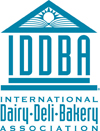
The changing economy has spurred many consumers to change their spending habits, with more than half of consumers saying they are buying less in the deli and prepared-food areas, according The New Value Shopper, IDDBA’s 2009 study on how the economy is affecting consumers’ food purchases.
Taste, price, freshness, cleanliness and quality are the attributes consumers value most in the deli. Fewer consumers put a high value on organic, local, and imported designations than they did during the economic boom. Instead, consumers are looking for value.
According the IDDBA research, deli meat shoppers are using a number of tactics to get more protein for their penny. These include opting for prepackaged meats over sliced-to-order meats from the service deli, purchasing sandwich meats from the meat department rather than the deli department, and becoming less brand-focused and more discount-focused. In the words of one shopper, The price per pound of deli items has increased too much, so I look for sales.
Deli meat businesses that want to appeal to consumers’ newfound sense of thrift can highlight the relative frugality of making a deli meat sandwich at home and bringing it to work, rather than buying a fast-food lunch. According to The NPD Group, the percentage of adults who take their lunches to work rose from 11.3 percent to 12 percent over one year.
Despite all the talk of a weakening economy, deli executives should not forget that a large segment of the population is earning just as much as it was before the economic downturn. While many of these individuals are cutting their spending because of uncertainty over the future, they still have room in their budgets for mid-tier and premium items. They are often willing to pay a little more for meats they believe are better for them — perhaps because of reduced sodium, added ingredients such as olive oil, or natural processing methods.
As a result, meats with so-called clean labels — labels that list few preservatives or fillers — are gaining more prominence. Manufacturers are taking advantage of new technologies, such as employing high water pressure during meat processing, to curb pathogens and reduce the need for preservatives. Processors are also looking to spices to replace some of the nitrites and nitrates in cured meat, since many spices have naturally occurring compounds that interfere with bacterial growth. For example, scientists in Iran discovered that up to 60 percent of the sodium nitrite used to preserve meats can be replaced with annatto without significant changes in color, flavor, aroma or microbial growth.
Another area in which manufacturers’ added-value efforts have paid off is plastic tub packaging. This form of packaging for deli meats continues to win over consumers because it is easier to handle than zip bags and vacuum bags. Consumers also perceive plastic tub packaging to be better at preserving meat’s freshness.
This year, IDDBA published two reports that provide insights into deli consumer trends in this new economic age: The New Value Shopper and What’s in Store 2010. The New Value Shopper evaluates findings from a survey of 3,561 consumers to show deli, bakery, and dairy food processors and retailers how they can thrive in the new economy. What’s in Store 2010 reports on sales and consumption trends affecting the deli, dairy, and bakery sections of the supermarket. Purchasers of What’s in Store 2010 gain online access to national sales tables that are updated quarterly.
Report Abusive Comment